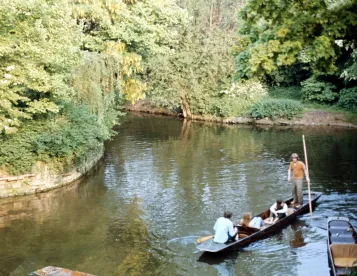On February 28, 2017, President Trump signed an executive order directing EPA and the Army Corp of Engineers (the Corps) to rescind or revise the Obama administration’s Water of the United States (WOTUS) rule.
The WOTUS rule has a tumultuous past, with many upset over the far reach of the rule. Although the rule was judicially stayed before its terms were in effect, the executive order purports to “restore the rule of law, federalism, and economic growth to the definition of navigable waters.” However, it will take the agencies time to craft a replacement rule. Meanwhile, many in the regulated community will still be unsure whether their activities are regulated under the Clean Water Act.
WOTUS Rule: A History of Uncertainty
The extent of “navigable waters” regulated by the Clean Water Act has been especially unclear since the Supreme Court’s 2006 ruling in Rapanos v. United States, in which a divided Court failed to produce a majority opinion. To attempt to resolve that uncertainty, EPA and the Corps issued the WOTUS rule in May 2015, partly based on the “significant nexus” test articulated in Justice Kennedy’s concurring opinion in Rapanos. The National Association of Manufacturers and many others (including environmental groups) almost immediately brought multiple suits challenging the rule. Exercising consolidated jurisdiction, the Sixth Circuit issued a nationwide stay of the rule in October 2015. (The Supreme Court has agreed to consider whether the Court of Appeals, rather than the District Courts, are the appropriate forum to hear WOTUS rule challenges.)
Executive Order: An Unknown Future
President Trump’s executive order directs EPA and the Corps to begin the process of changing or repealing the WOTUS rule and, as part of that process, to consider a narrower WOTUS definition. Specifically, the order instructs the agencies to consider defining WOTUS consistently with the narrower view expressed in Justice Scalia’s plurality opinion in Rapanos. That plurality opinion requires that smaller wetlands have a continuous surface connection to a larger body of water in order to be regulated. The order also directs the attorney general to consider asking the courts reviewing challenges to the WOTUS rule to delay a decision until a new regulation is issued.
The agencies will have to go through the traditional rulemaking process to implement the executive order, including the development, legal, and technical support. A new or revised rule could also face challenges after its issuance, further delaying implementation.
Conclusion
Although the order seems to be a win for business interests challenging the WOTUS rule, the development of a replacement rule will be a laborious process—one that took the prior administration many years to attempt to implement. In the meantime, there remains the uncertainty created with the Rapanos ruling over which bodies of water are subject to the Clean Water Act.



 />i
/>i

